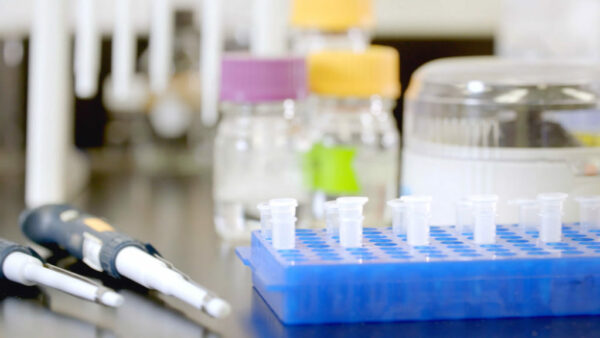Your cart is currently empty!

Resource Details
Top Down Sample Prep with the ProTrap
Download Top Down Sample Prep Protocol (PDF)
The following suggested protocol has been optimized using maximum and minimum protein concentrations of 0.5 mg/mL and 0.01 mg/mL respectively and is provided to demonstrate the potential uses of the ProTrap XG.
Our team works with customers to optimize protocols for your workflow, sample type, and research goals. Connect with us at sales@allumiqs.com to learn more about how we can help.
PREPARATION NOTES
The ProTrap XG device is optimized to process 50 µg of protein.
For reproducible and maximal protein precipitation, the maximum SDS content in your sample during precipitation should be 1%. If your extraction or lysis buffer contains more than 1% SDS, dilute it with a buffer containing a maximum ionic strength of 300 mM.
Spin speeds are based on a standard benchtop microcentrifuge with 24 x 1.5/2.0 mL rotor.
Times provided are guidelines only.
If more than a few microliters of liquid remains in the Filtration Cartridge after any spin, return it to the centrifuge and repeat the spin, or consider increasing the spin speed. 3000 ×g (6000 rpm) is recommended for subsequent spins and the ProTrap XG has been tested up to 9000 ×g (10,000 rpm).
MATERIALS REQUIRED
All chemicals and reagents should be ACS grade/HPLC grade or better.
Acetone
5 M NaCl in water
80% Formic Acid in water (chilled to –20°C)
Chilled Water
TOP DOWN SAMPLE PREP PROTOCOL
For reproducible and maximal protein precipitation, the maximum SDS content in your sample during precipitation should be 1%. If your extraction or lysis buffer contains more than 1% SDS, dilute it with a buffer containing a maximum ionic strength of 300 mM. For the best experience, your sample should contain at least 50 mM NaCl. If you need to add NaCl, use a 5 M NaCl solution.
- Do not allow the membrane in the Filtration Cartridge to dry out between steps.
- Screw a Plug onto the base of the Filtration Cartridge.
- Transfer 100 µL of the diluted sample protein to the plugged Filtration Cartridge.
- Add 400 µL room temperature acetone.
- Cap the Filtration Cartridge and rock gently, tilting no more than 45°, to combine the solvents.
- Insert the Filtration Cartridge in the Microcentrifuge Tube, allow 30 minutes for the protein to fully aggregate at room temperature.
- With Plug attached, centrifuge at 2500 ×g (5000 rpm) ×2 minutes.
- Remove Filtration Cartridge from the Microcentrifuge Tube, invert, and unscrew the Plug.
- Return the capped Filtration Cartridge to the Microcentrifuge Tube and centrifuge at 500 ×g (2000 rpm) ×3 minutes. Discard the flow through solvent. If any solvent remains in the Filtration Cartridge, re-spin the unit for 2-5 minutes at 3000 ×g (6000 rpm).
- Wash the protein pellet with 400 µL acetone. Immediately centrifuge at 500 ×g (2000 rpm) ×2 minutes. Discard the flow through wash solvent.
- Replace the plug. Chill the pellet in the Filtration Cartridge for 10 minutes at –20°C.
- Add 50 µL of cold (-20°C) 80% formic acid in water. Cap the Filtration Cartridge, place in the freezer for 10 minutes, then sonicate for 1 minute.
- Add 450 µL chilled water; cap and vortex to mix the solvent.
- Intact proteins may be directly recovered in a clean Microcentrifuge Tube, centrifuging at 350 ×g (2000 rpm) ×5 minutes.
If further protein clean-up is desired, resolubilized proteins may also be subject to SPE using the provided OPTIONAL SPE Cartridge and the SPE Protein/Peptide Clean-up Protocol.